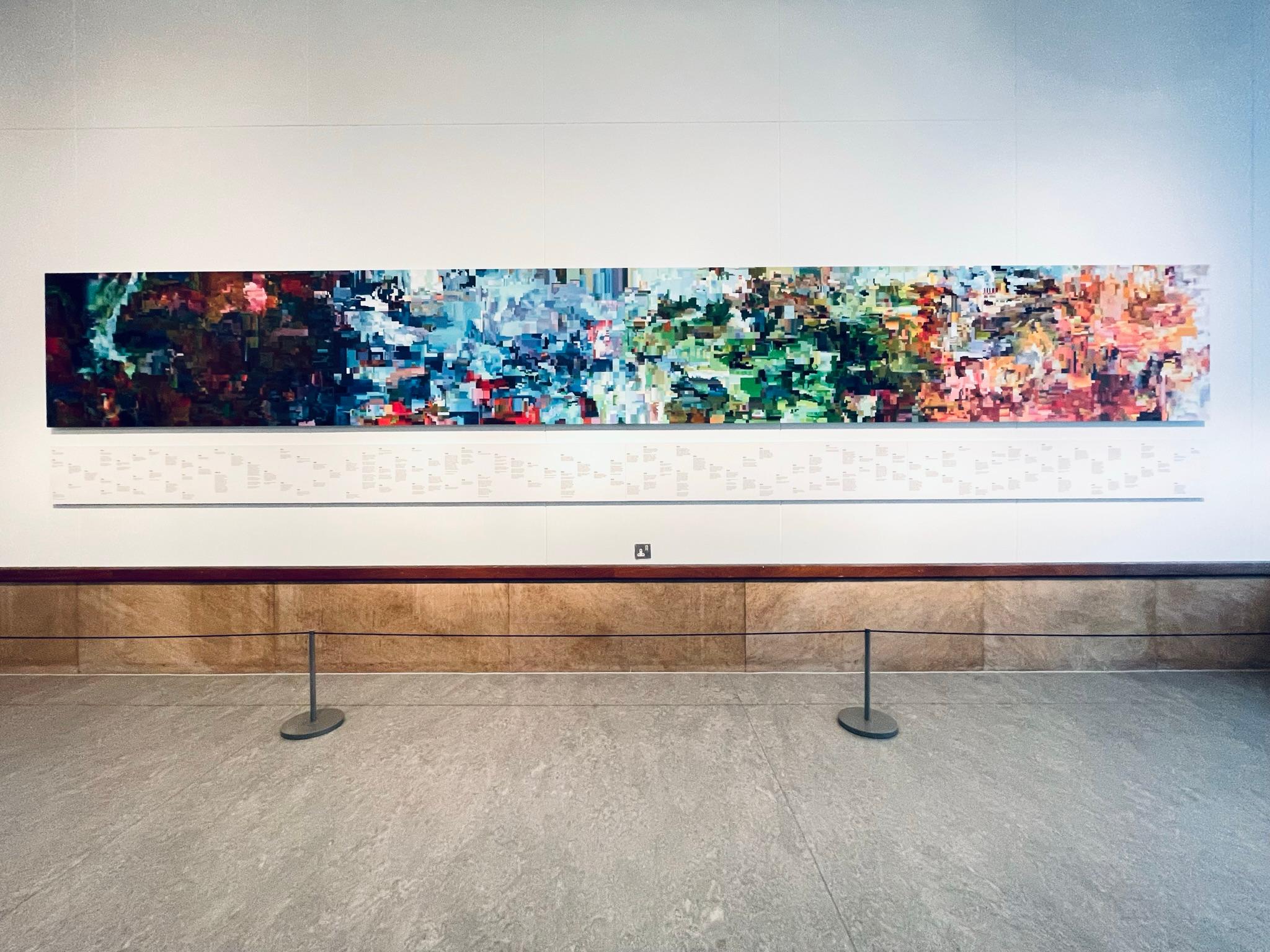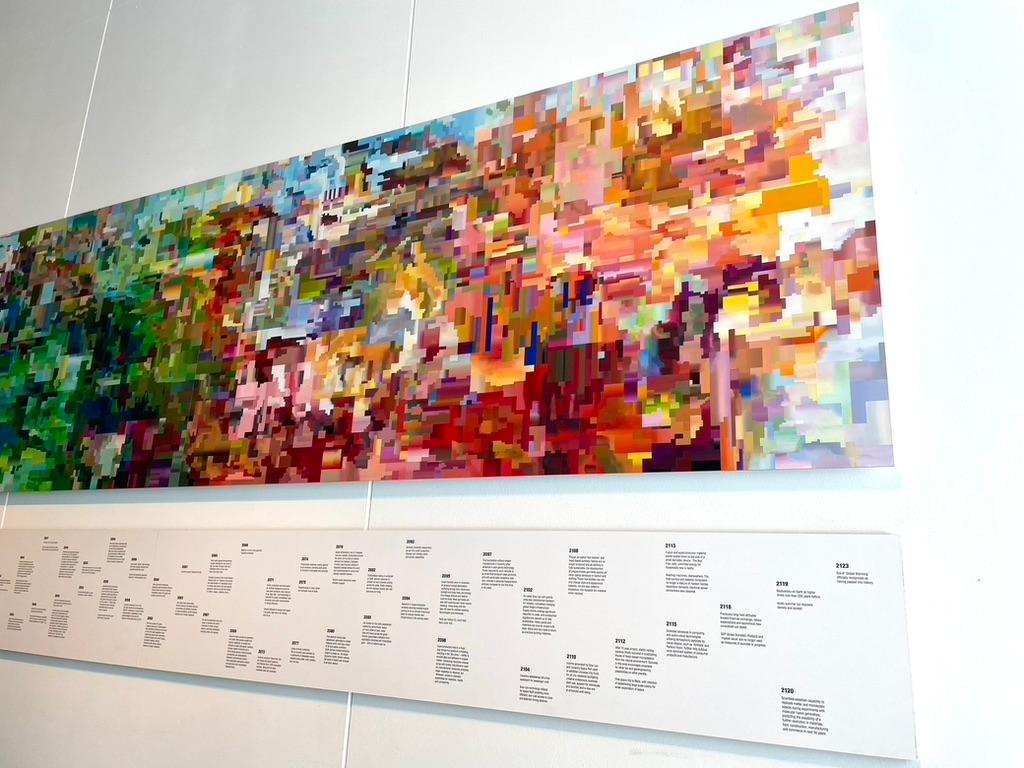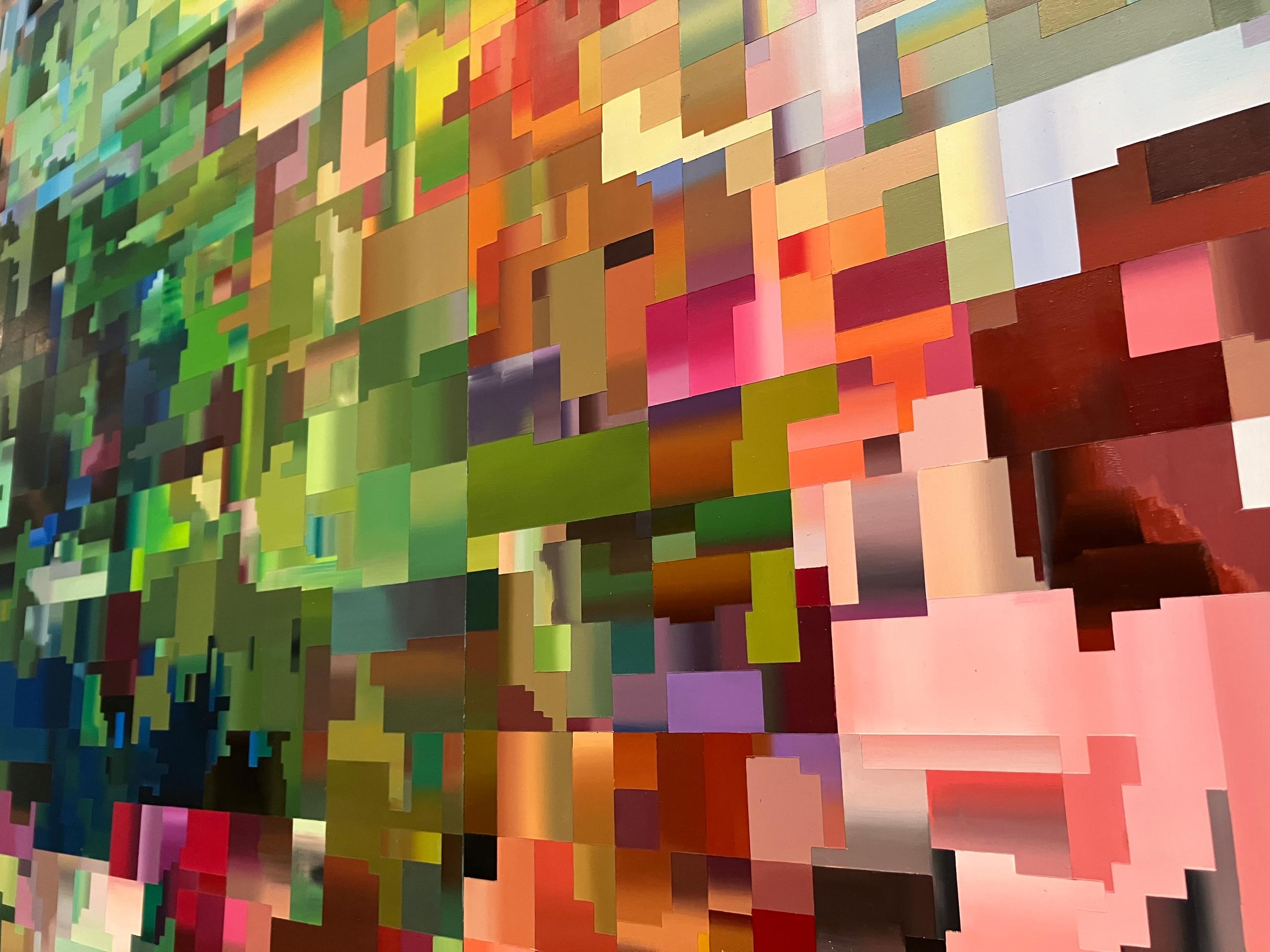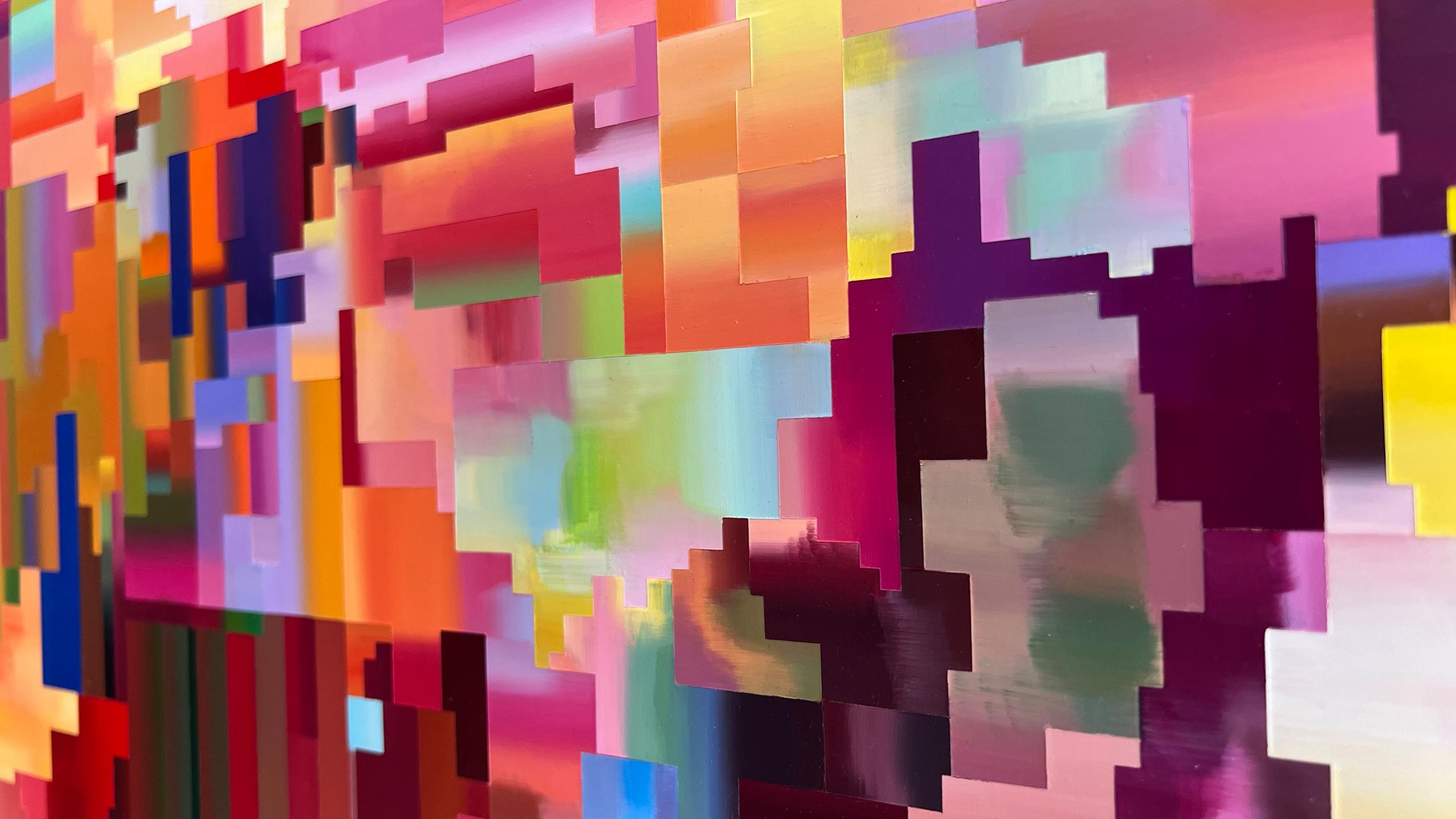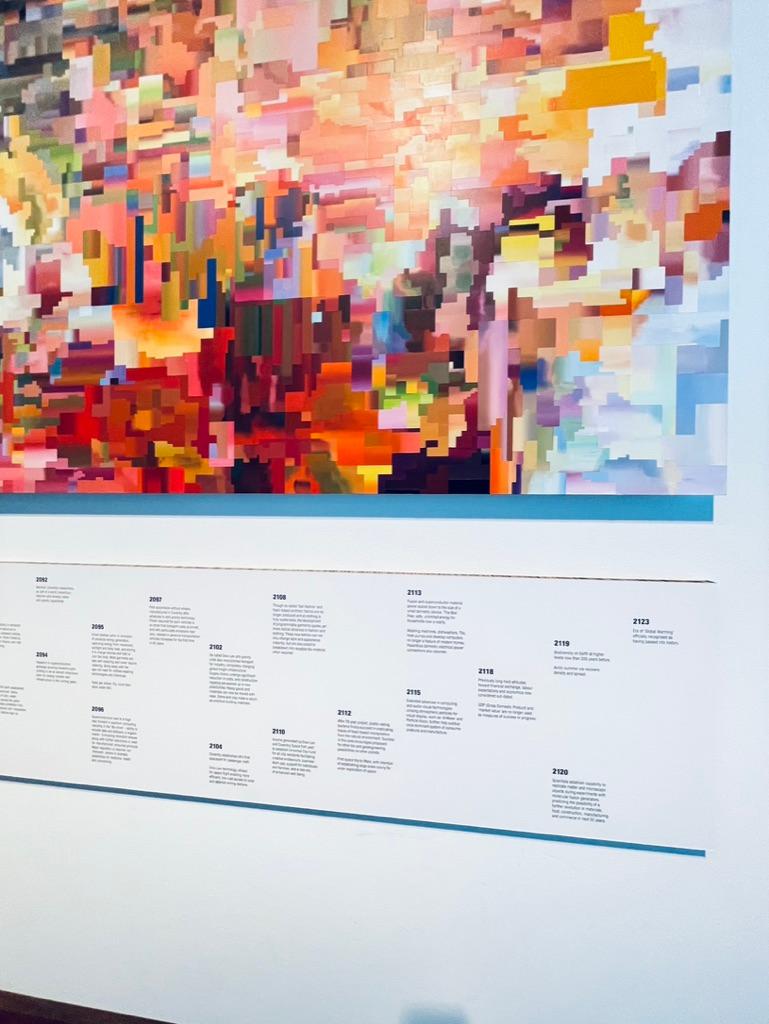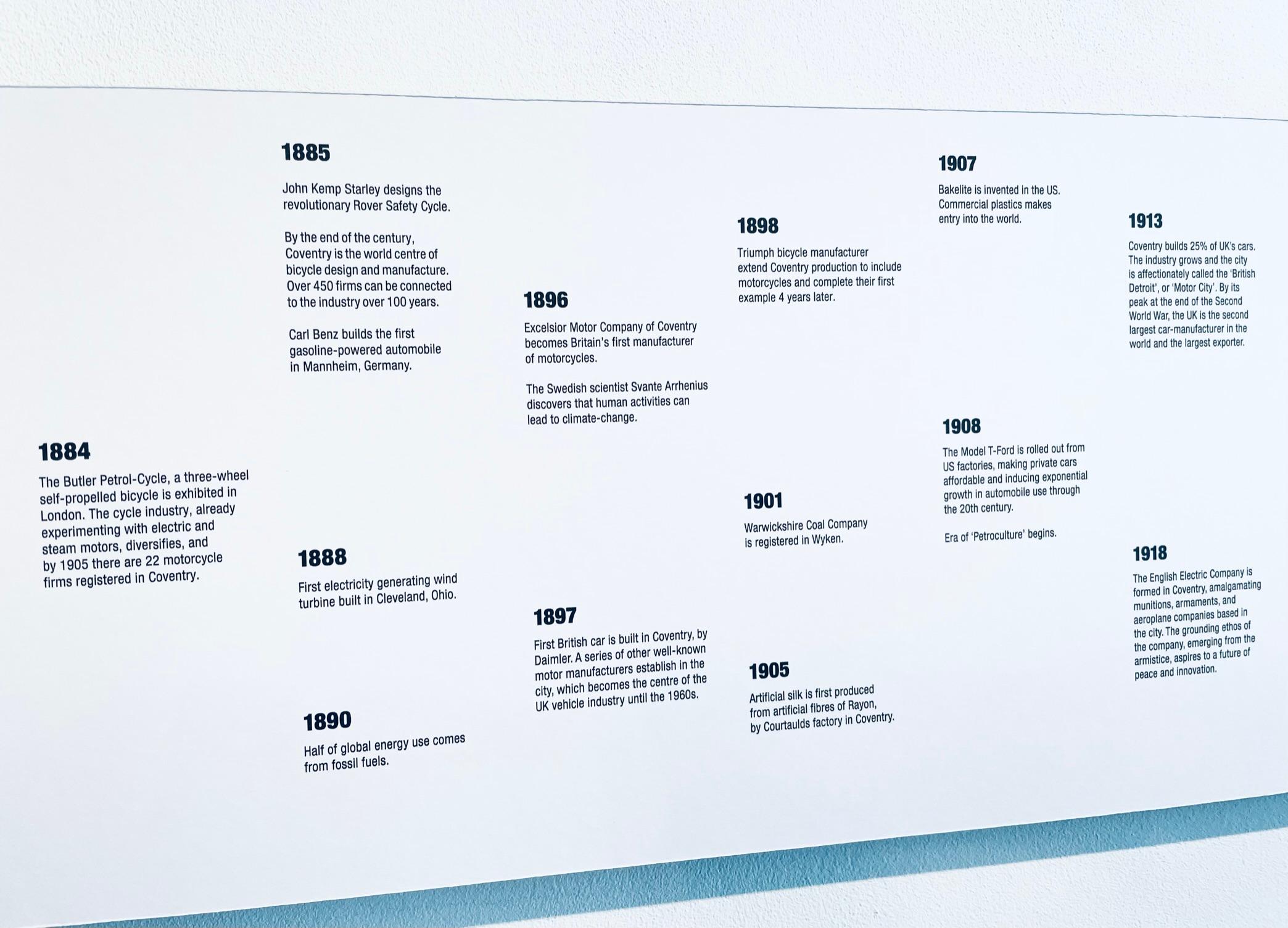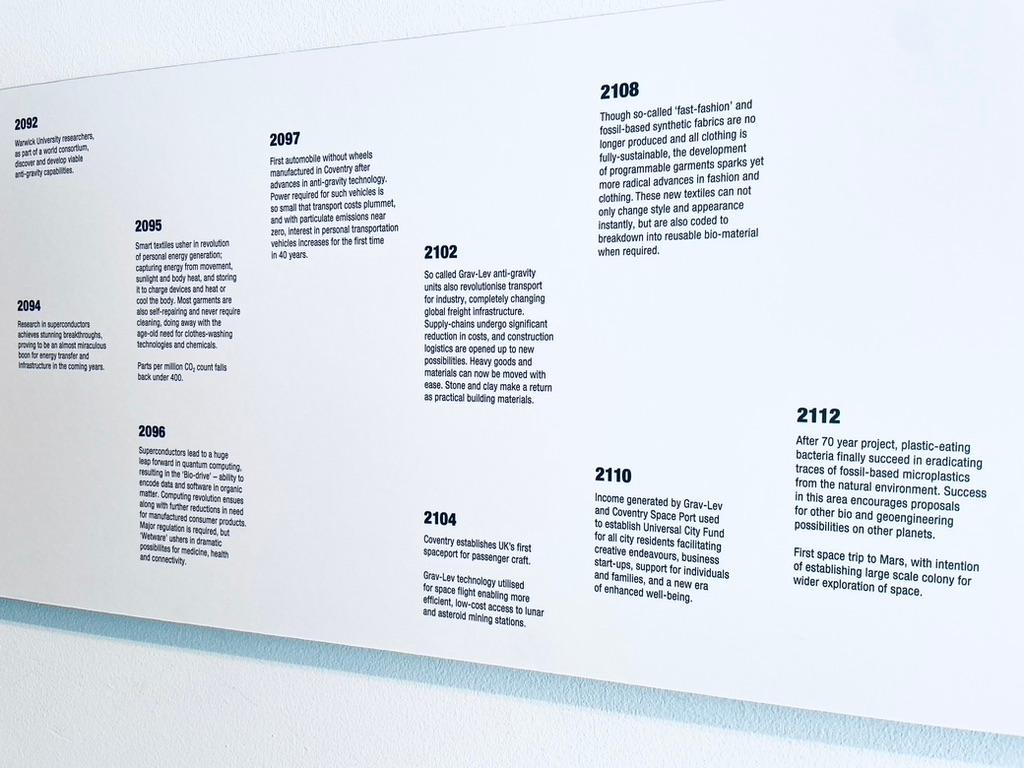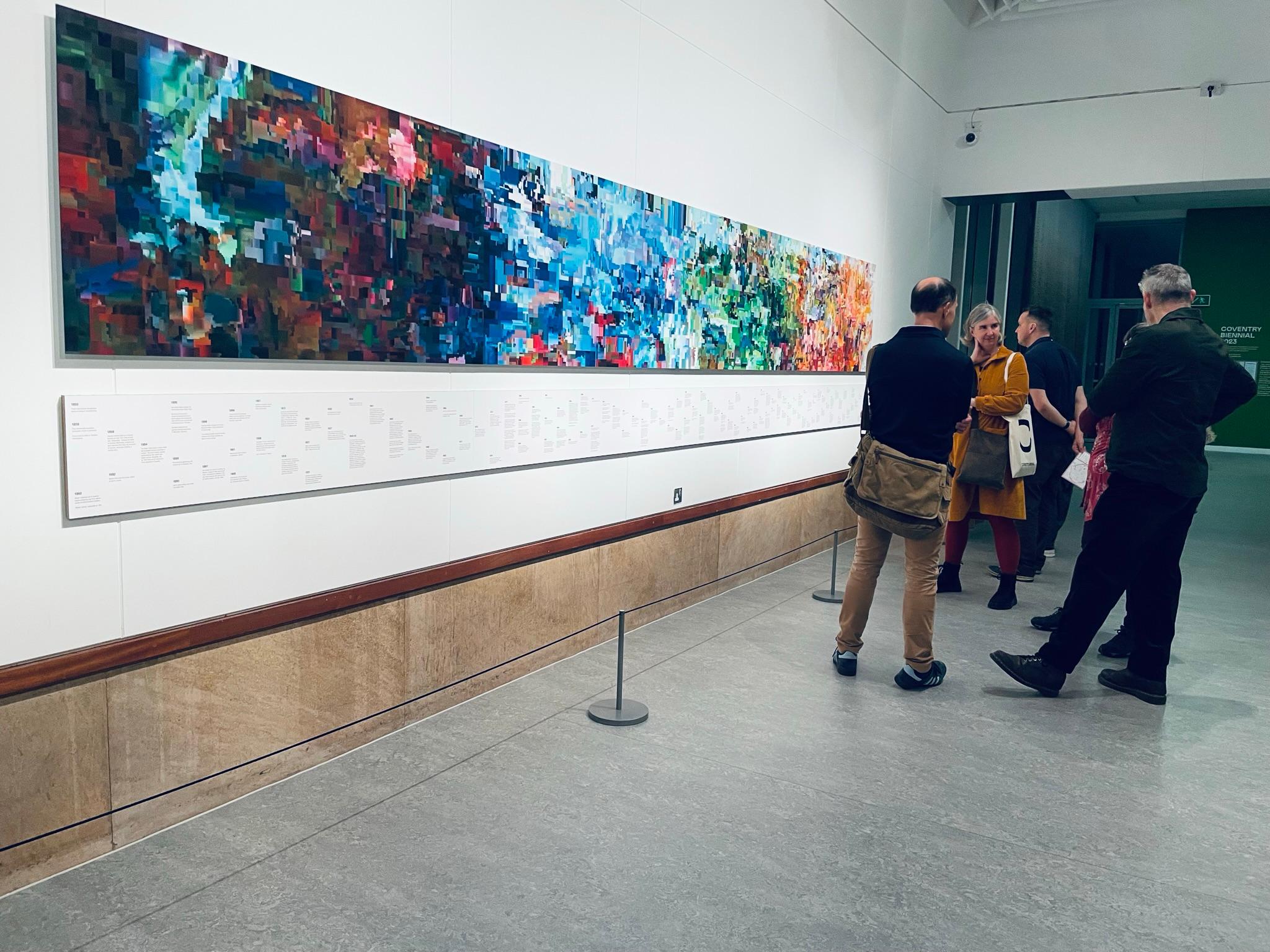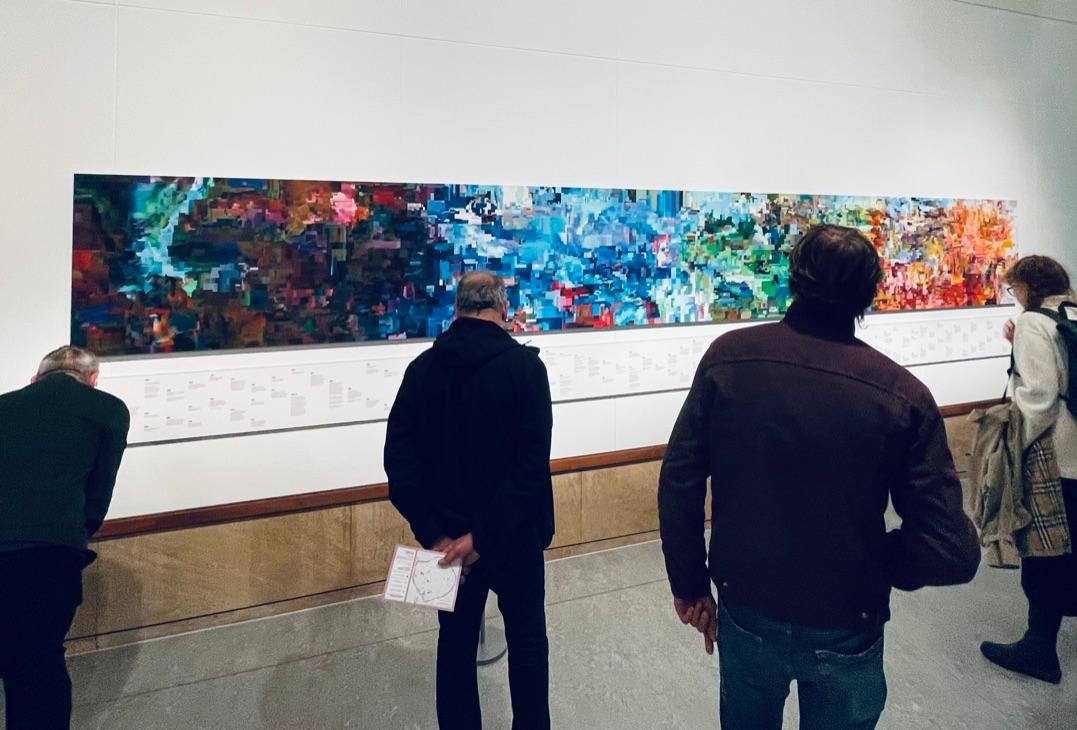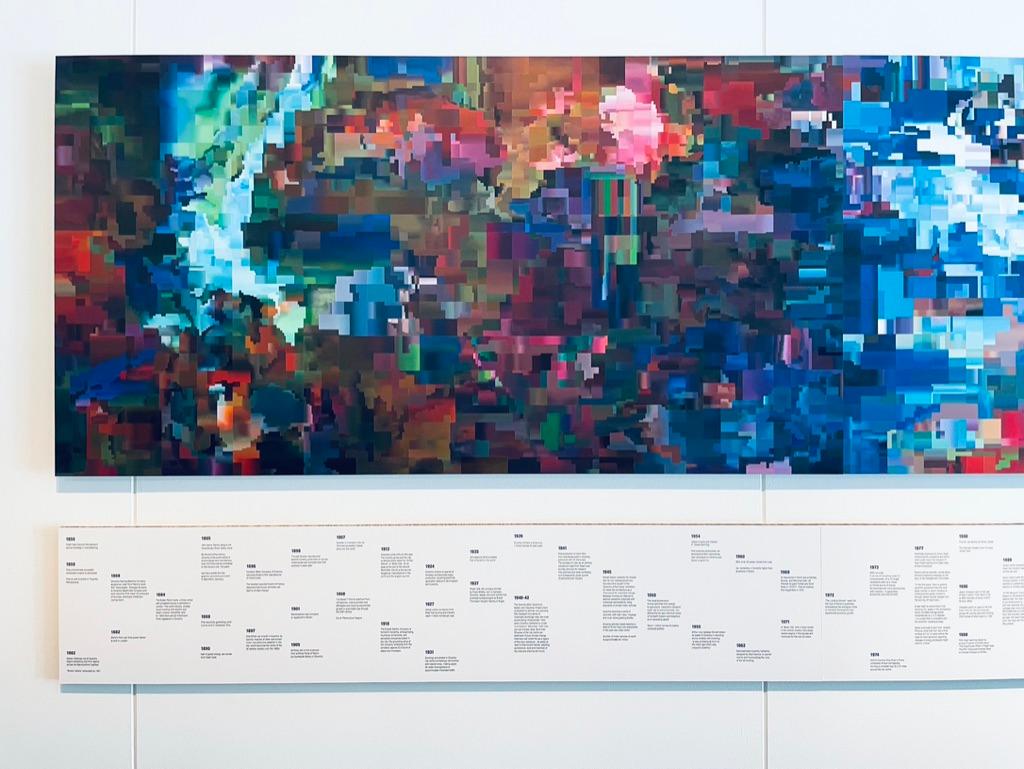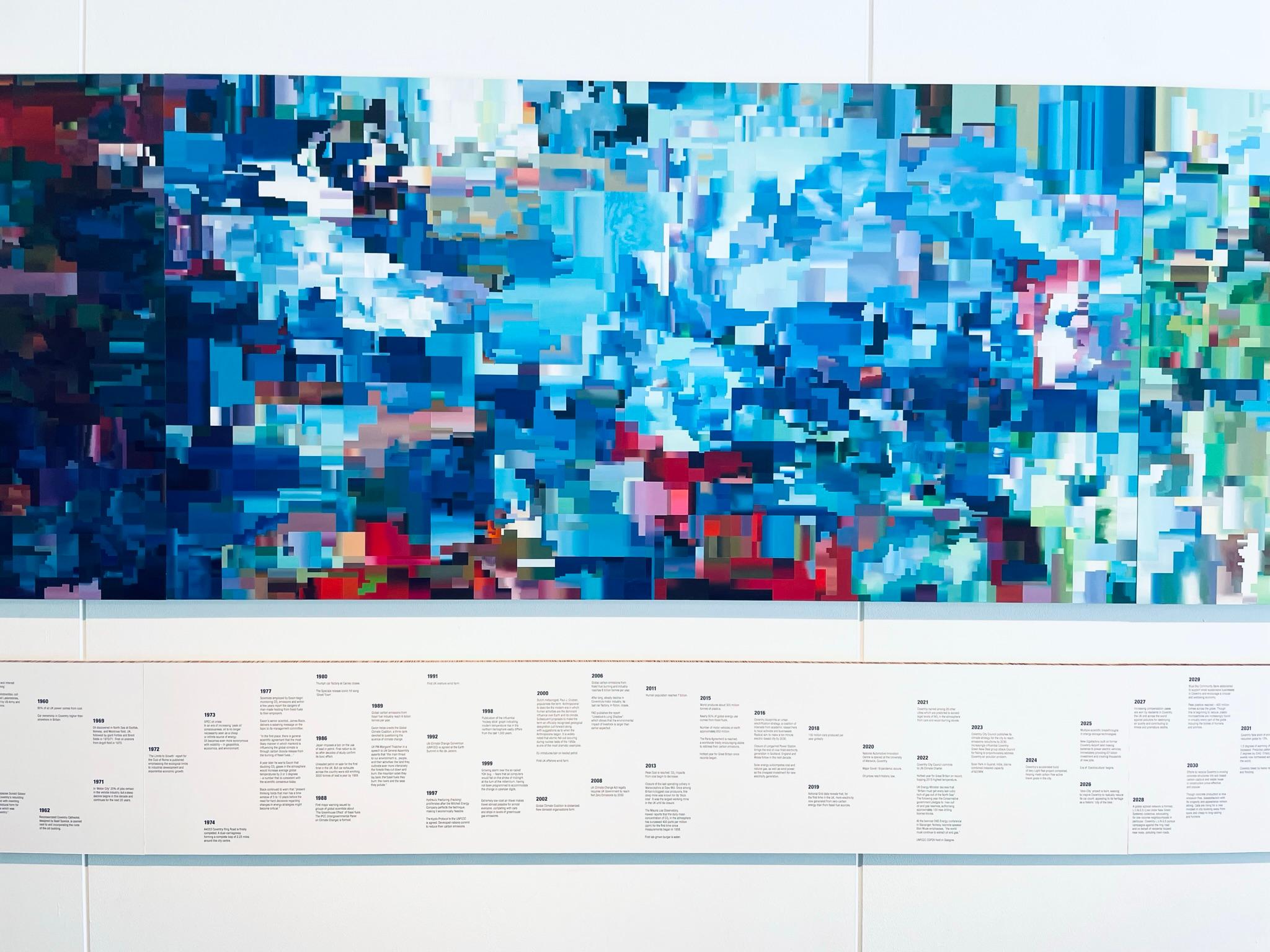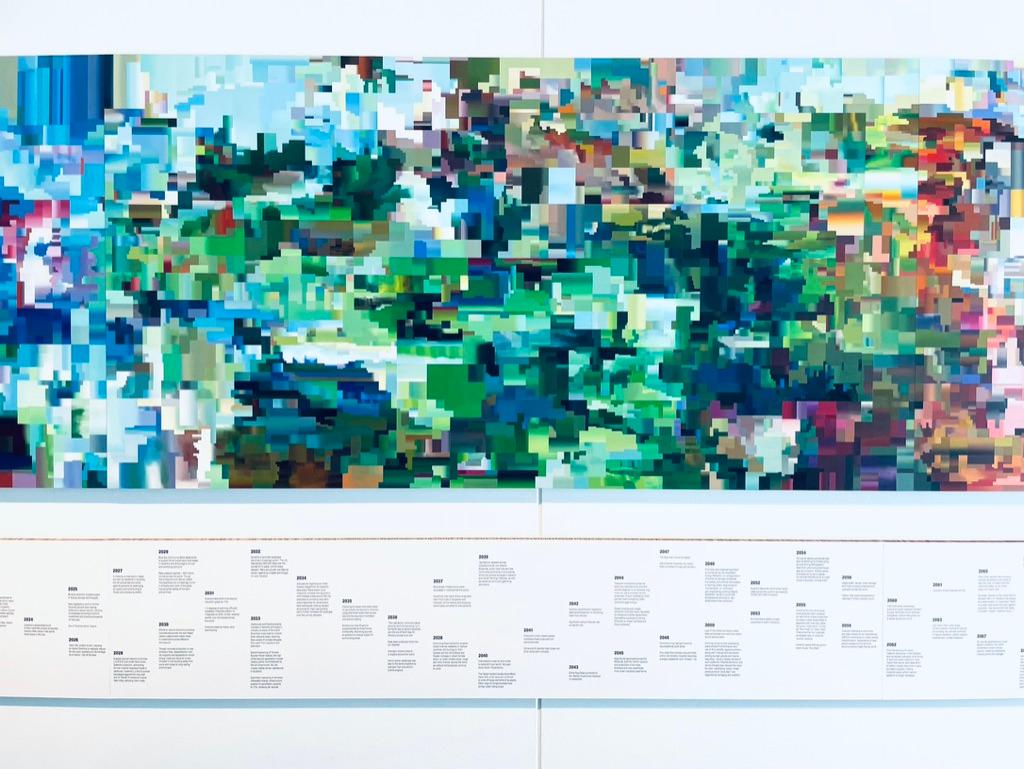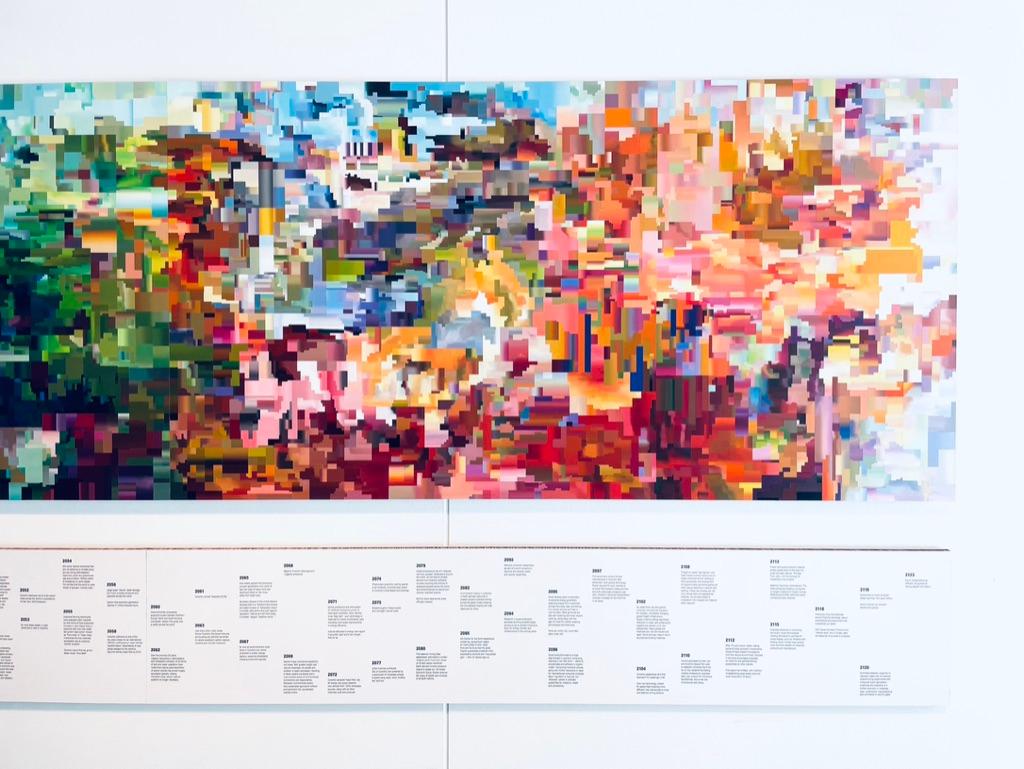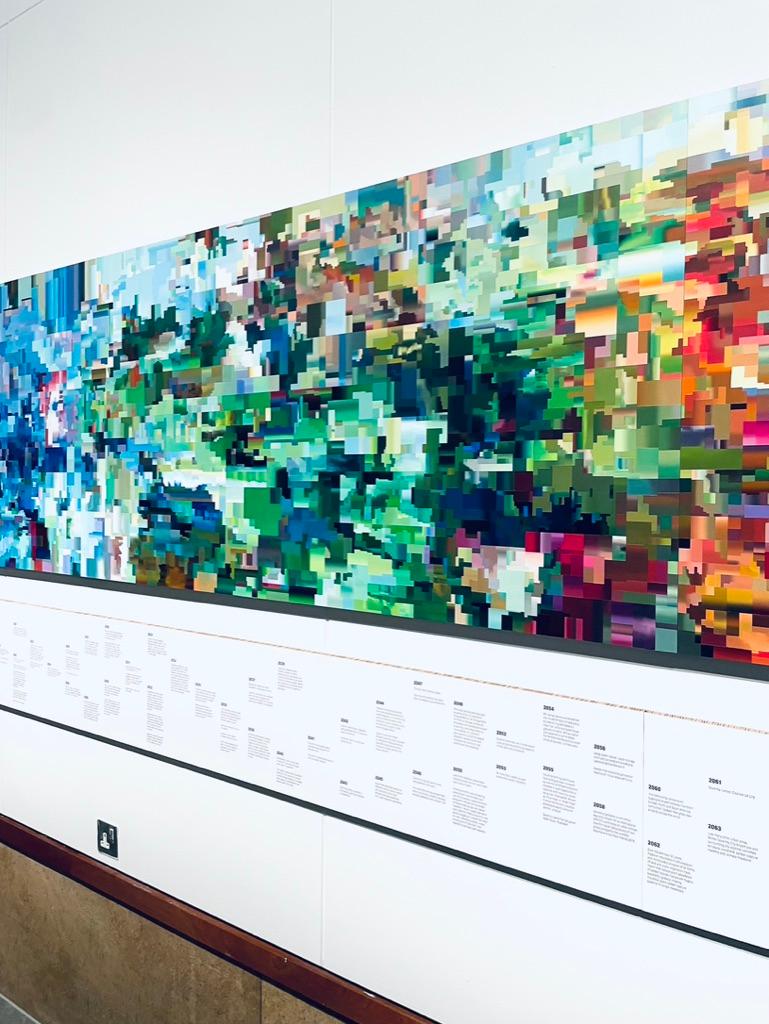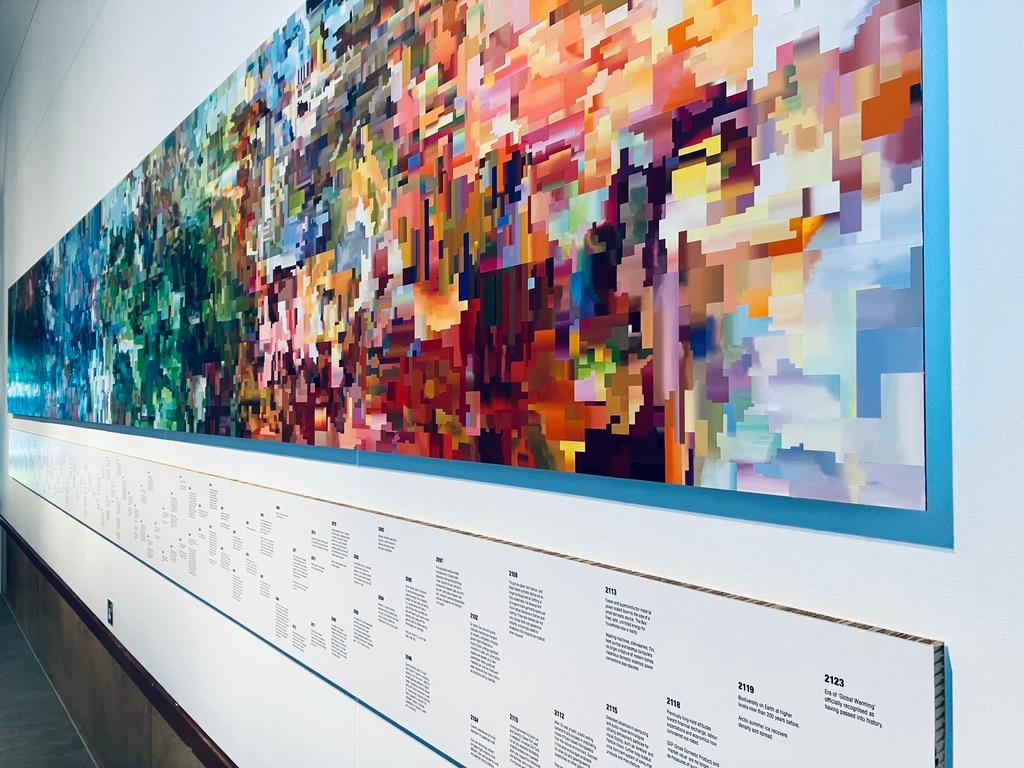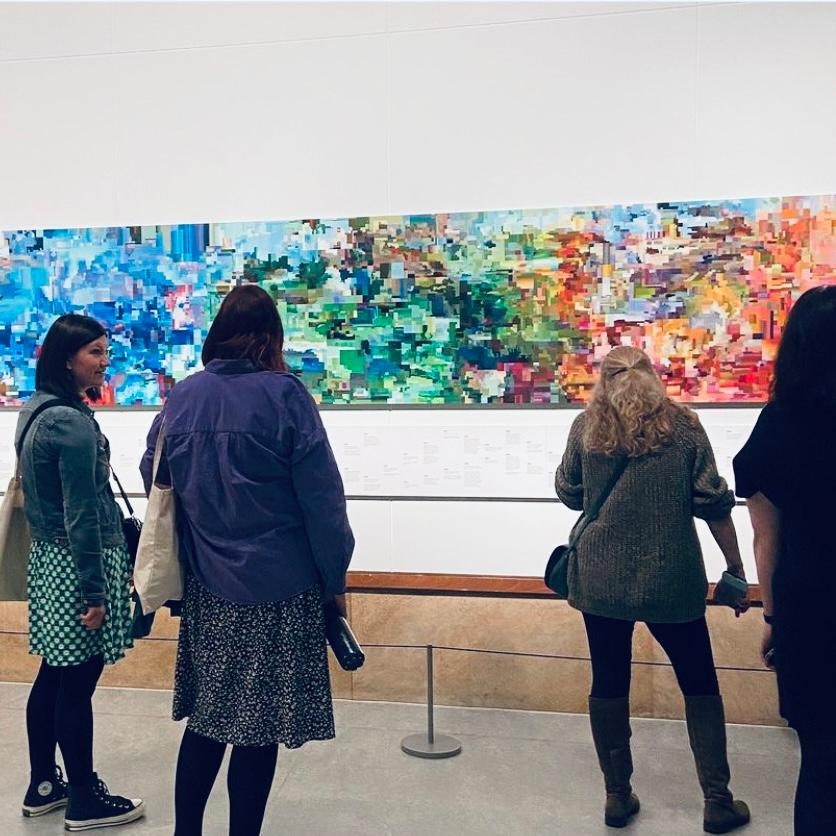COVENTRY BIENNIAL 2023
A new public commission
'Memories of a Future City', on show at The Herbert Gallery & Museum from October 2023 to January 2024 as part of the Coventry Biennial 2023, is a mixed-media installation commissioned by the Biennial in collaboration with University of Warwick Literature Professor, Dr. Graeme Macdonald.
The commission is a response to Dr. Macdonald's research in the field of 'Petrocultures', and draws on his involvement in international projects that utilise a technique called 'Open Futuring', aiming to inspire new perspectives on the climate crisis and open up the possibility of optimism for the future. Read more about Graeme's research here, along with two examples of his recent projects: VIDI Glasgow and The Museum of Carbon Ruins.
The text on the printed panel beneath presents a Coventry-focussed ‘history’ of energy transition. Stretching one hundred years into the future, it traces the developments of the fossil fuel era from 1850, to a near-utopian, zero-carbon society in 2123. In the same way that the painting suggests the digital 'screenic' media of today (whilst quoting Monet's Water Lillies and the beginnings of abstraction), the text design reflects diverse forms of written media - newspapers, academic journals, poetry, social media feeds, books, web pages. Also calling back to the early 1900s and the 'concrete poetry' of modernist visonaries such as Guilaume Apollinaire, its visual undulations move in sympathy with the fractured flow of the imagery.
Download the full timeline text here
As a whole, the work can be seen as a kind of giant viewing monitor streaming a timescape of humanity's environmental progress. Reminiscent of David Bowie's alien character in The Man Who Fell to Earth, with his bank of multiple TVs, or the five-dimensional Tralfamadorians in Kurt Vonnegut's novel, Slaughterhouse-Five, it positions the viewer as almost outside of time, able to see the entire scope of history - knowing the future as if it had already happened. Just such a scenario is depicted in another source of inspiration - Denis Villeneuve's alien visitation film, Arrival. In it, the main character, whose perception is radically altered as a result of learning the aliens' language, begins to 'remember' instances from her own future, and thanks to her newfound foresight, is able to avert disaster. Hence the final title of the commission - Memories of a Future City.
